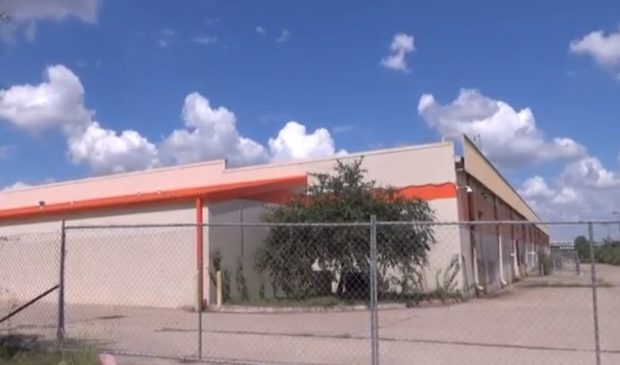Council to review plan for St. Johns Home Depot project after July break
Wednesday, July 1, 2020 by
Nina Hernandez Six years ago, when City Council Member Greg Casar was knocking on thousands of District 4 doors campaigning for his current seat, one question came up time and time again.
“People were asking, ‘What’s ever going to happen to the Home Depot and car dealership?’” Casar recalled. “When I told folks that the city had purchased it for a police station and courthouse, there were many people who were even more upset that this huge piece of property in a historically black neighborhood, that the city’s big investment there would be a police station and courthouse. It was not what people wanted.”
Six years later, the property is closer than ever to redevelopment. Council first had to vote to agree to abandon the police substation plans, which it did in December 2017. Then, UT’s Center for Sustainable Development embarked on a two-year public engagement period to find out the community’s vision for the project.
“And then next, try to make it a real amenity for the neighborhood,” Casar said, “but also create an amenity for the neighborhood that would not drive gentrification, that would benefit the neighborhood and create an opportunity for people to stay.”
Council will review UT’s report at its next regular meeting after the July break. If Council members agree with the vision outlined in the report, they will issue a request for proposal and begin the process of developing the land, which the city has owned and left abandoned for more than a decade.
The report offers four scenarios that involve 140-300 mixed-income housing units, open space, and commercial and nonprofit uses. Scenario B.1 would put a public street network across the site and include nearly 300 mixed-income housing units as well as semi-private open space and new commercial uses along Interstate 35.
Scenario B.2 also has a public street network, but cuts the housing units to 240 and adds a significantly expanded public park through the center of the property and new commercial uses along I-35. Scenario C.1 would put just a single public road across the site, 140 mixed-income housing units, a new terraced park, and commercial and nonprofit uses along I-35. Finally, Scenario C.2 would put a single public road across the site, 240 mixed-income housing units, a new terraced park, and commercial and nonprofit uses along I-35.
“Because of the community input, the city would only accept builders that are doing a project where the majority of the units are reserved for low-income and working-class people,” Casar said. “Where there would be homeownership and rental opportunities. All of that would be required because the city owns the land.”
Casar said he hopes Council can choose a developer to take on the project by the end of year or beginning of 2021. Once Council has chosen, the developer will finalize the architecture and get to work on the project. Provided Covid-19 doesn’t derail the project, Casar hopes to have ground breaking at least by 2022.
In a memo released last week, Economic Development Department interim Director Sylnovia Holt-Rabb outlined the financing options at the city’s disposal. Acknowledging that there are “competing financial priorities throughout the city,” Holt-Rabb wrote that Council will need to discuss the options and how they might fit into the city’s overall financial outlook.
The four scenarios feature a total funding gap of $41 million-$71.5 million, not including “potentially significant” on- or off-site utility infrastructure costs. To fund public infrastructure, the city could issue bond debt or create a new tax increment reinvestment zone, which would allow a percentage of the increase in future property taxes due to the development of the site to be dedicated toward the development of improvements at the property.
To fund the park development, the city could use parkland dedication fees, 2018 general obligation bond funds, or a parks partnership with other public entities.
In terms of housing, the city may need to use housing subsidies to allow for maximum affordability. “The scenario with the most extensive housing plan for 358 units and 78 percent affordability (Scenario C.2) estimated a housing subsidy requirement of approximately $31 million,” the memo reads.
“In so many ways, neighbors have set low expectations for the city, because historically we haven’t served that neighborhood,” Casar said. “So I think this would be really transformational and positive in our effort to slow displacement and preserve our neighborhoods, but I also hope it would show that the city is willing to change our priorities and focus on neighborhoods that we have not focused on as an institution for generations.”
Video still of the old Home Depot site from YouTube.
The Austin Monitor’s work is made possible by donations from the community. Though our reporting covers donors from time to time, we are careful to keep business and editorial efforts separate while maintaining transparency. A complete list of donors is available here, and our code of ethics is explained here.
You're a community leader
And we’re honored you look to us for serious, in-depth news. You know a strong community needs local and dedicated watchdog reporting. We’re here for you and that won’t change. Now will you take the powerful next step and support our nonprofit news organization?









